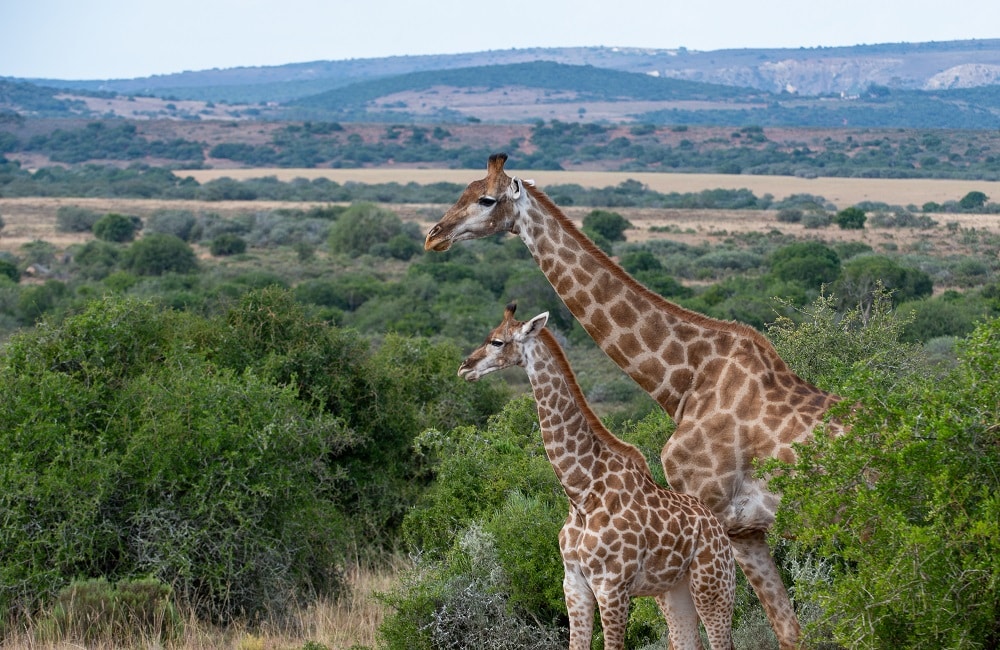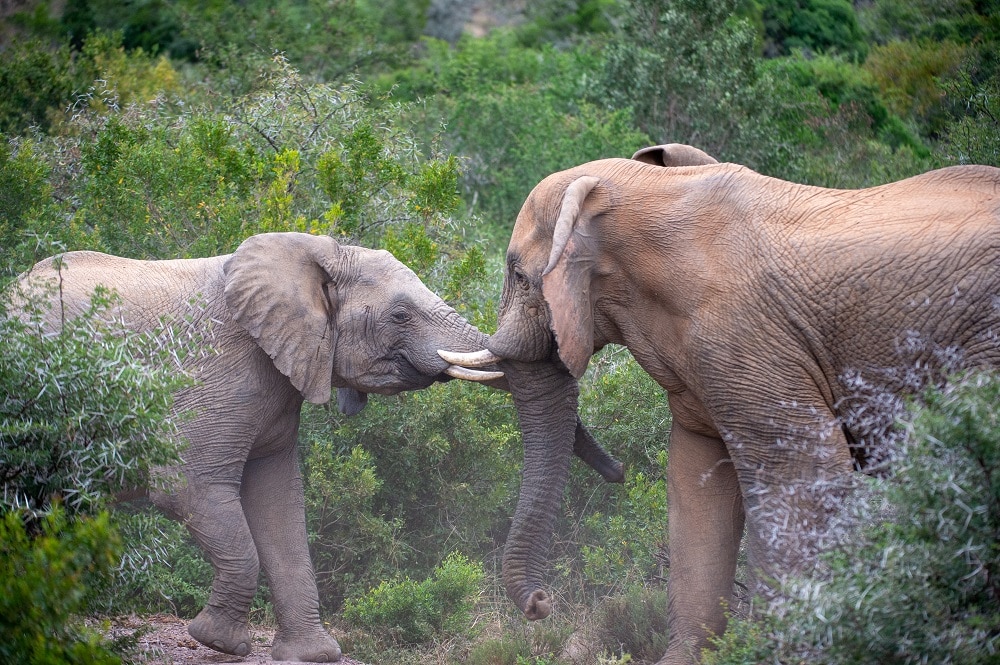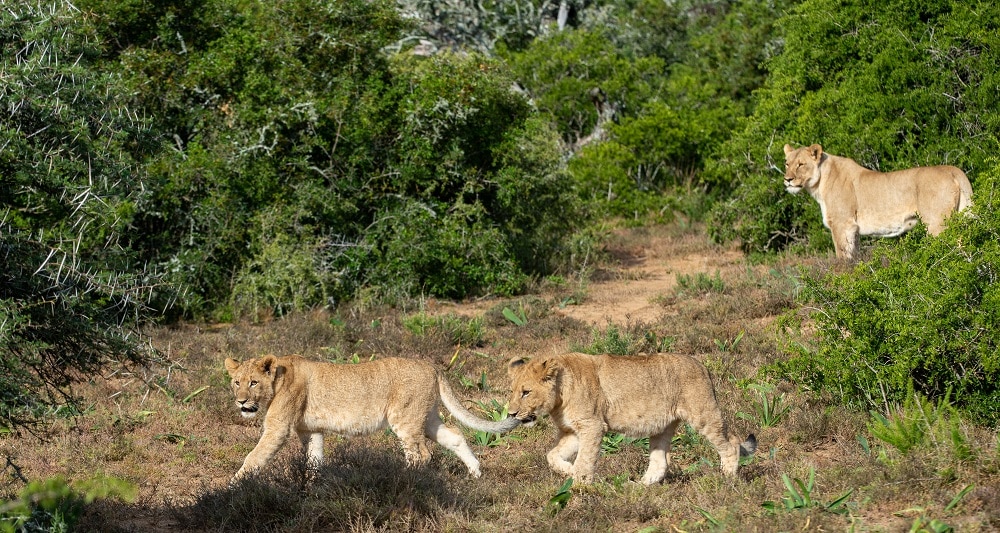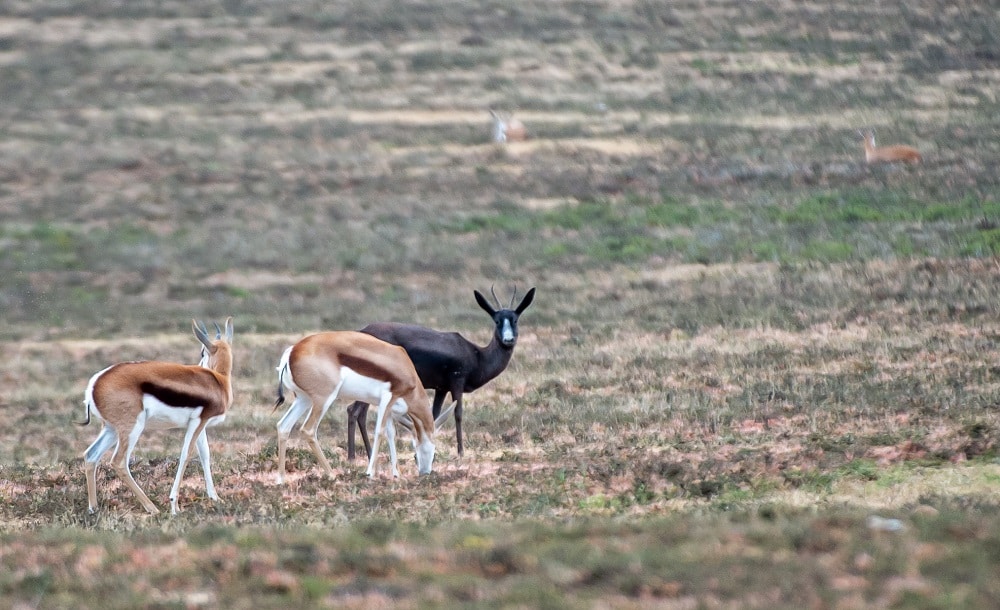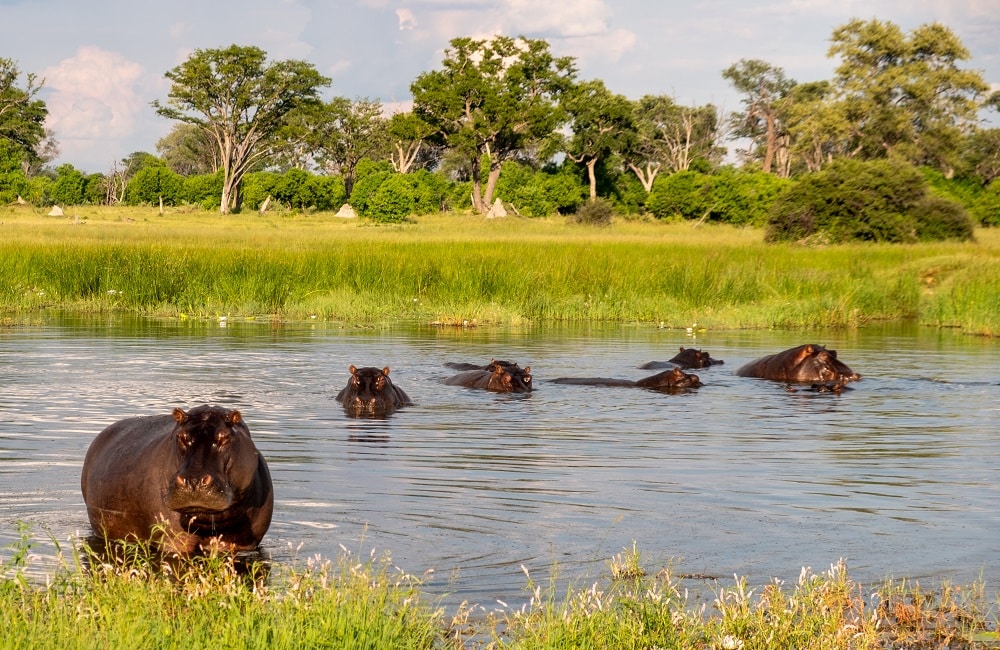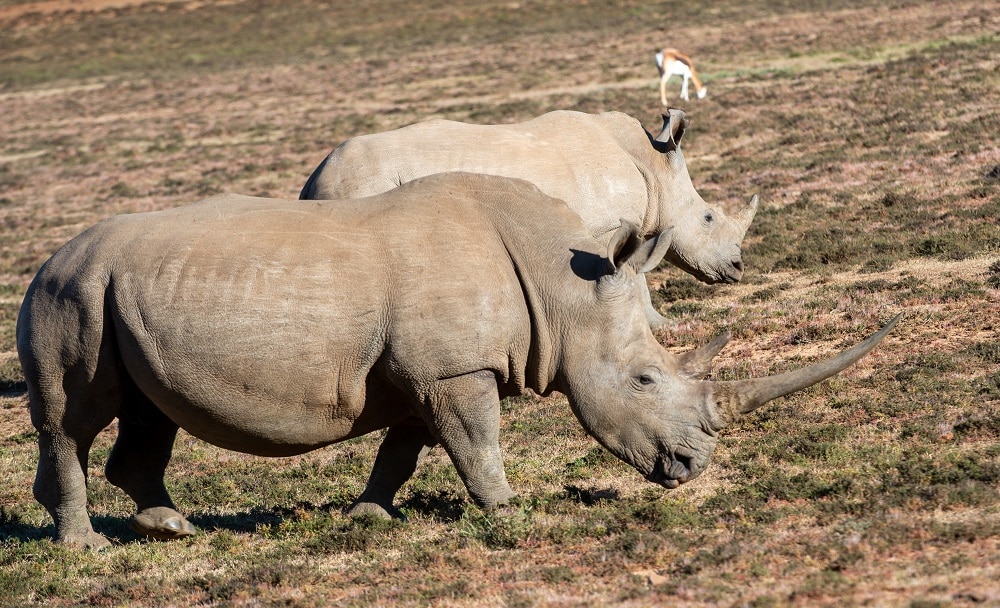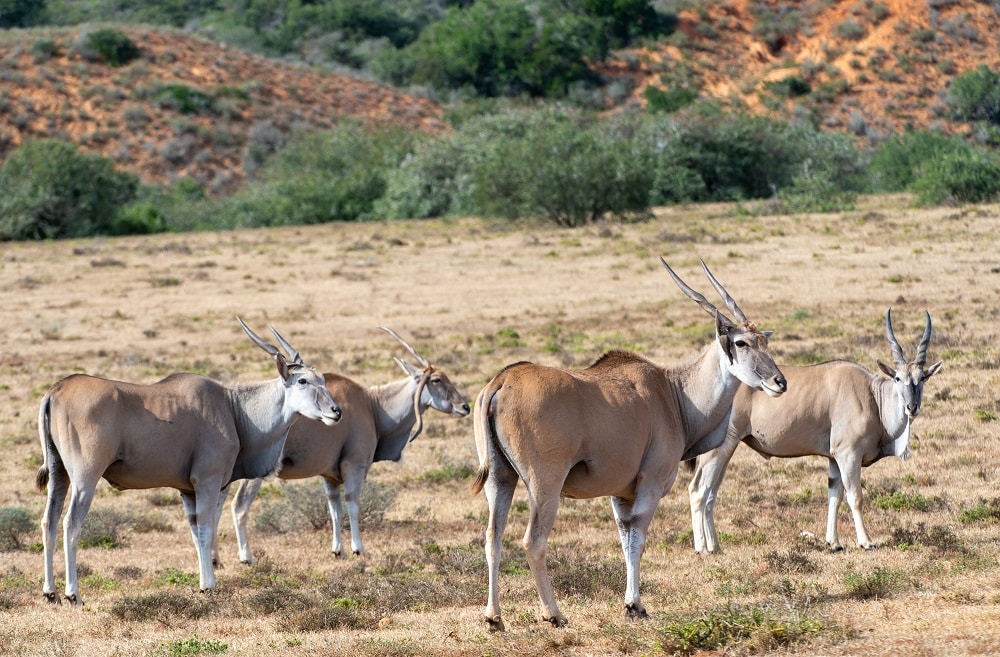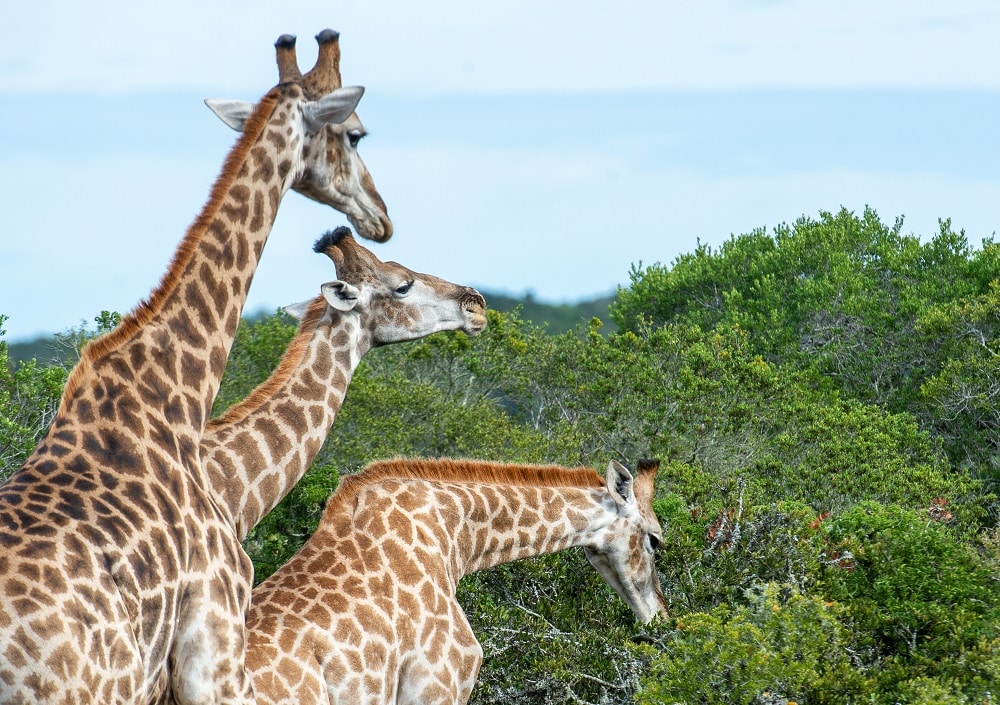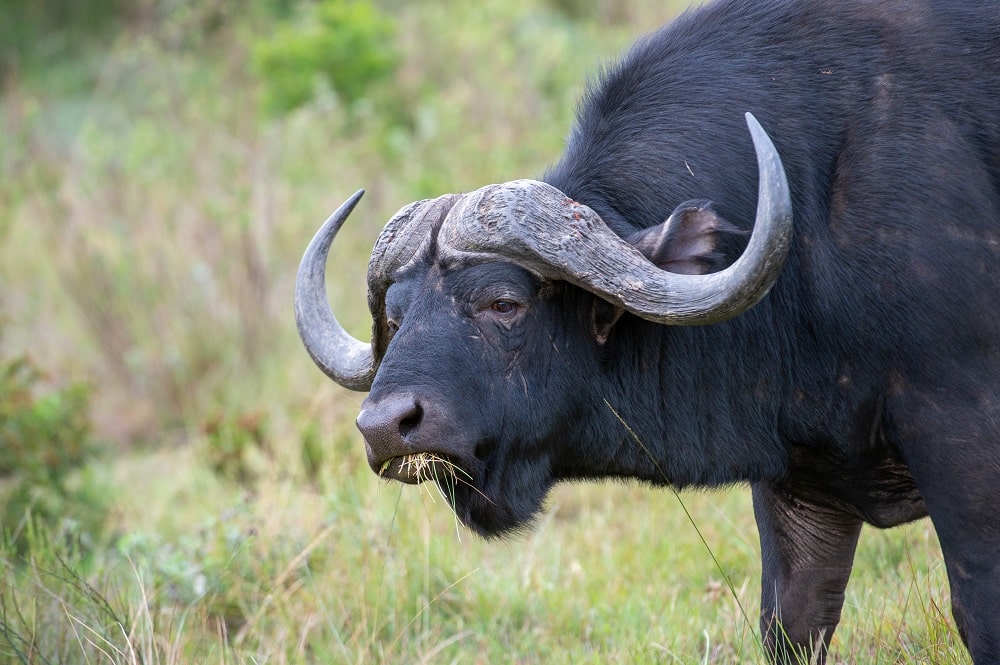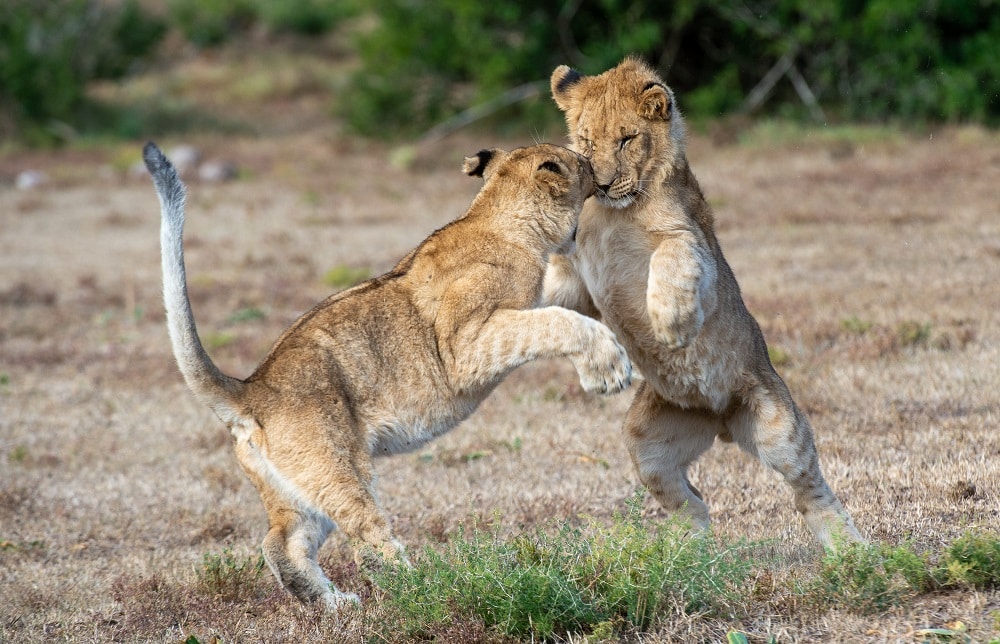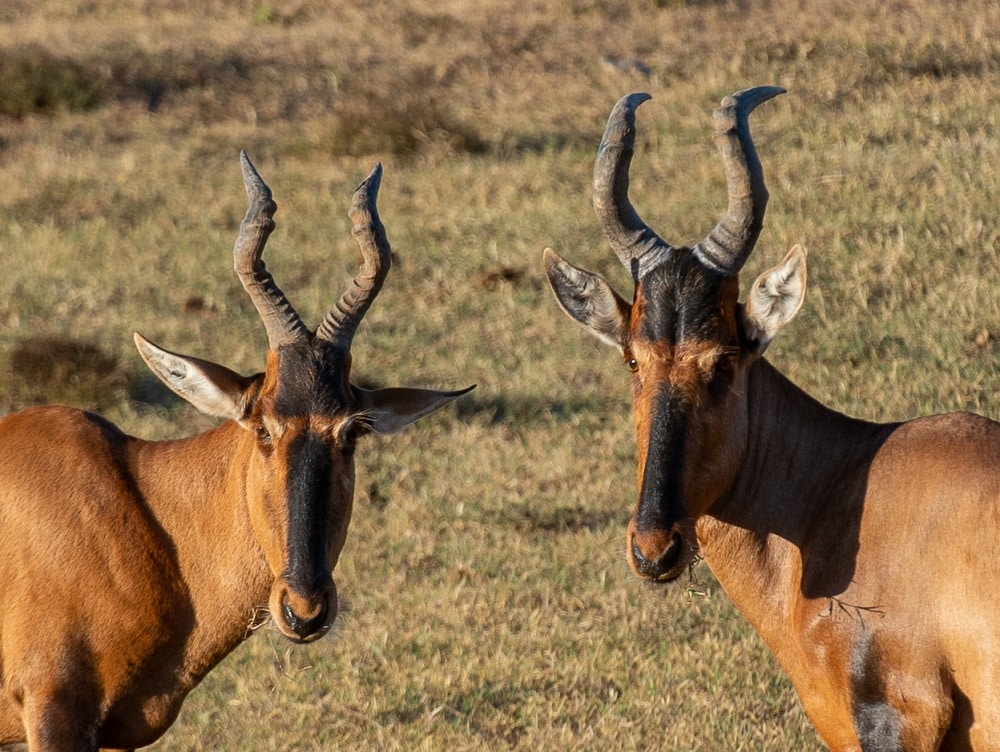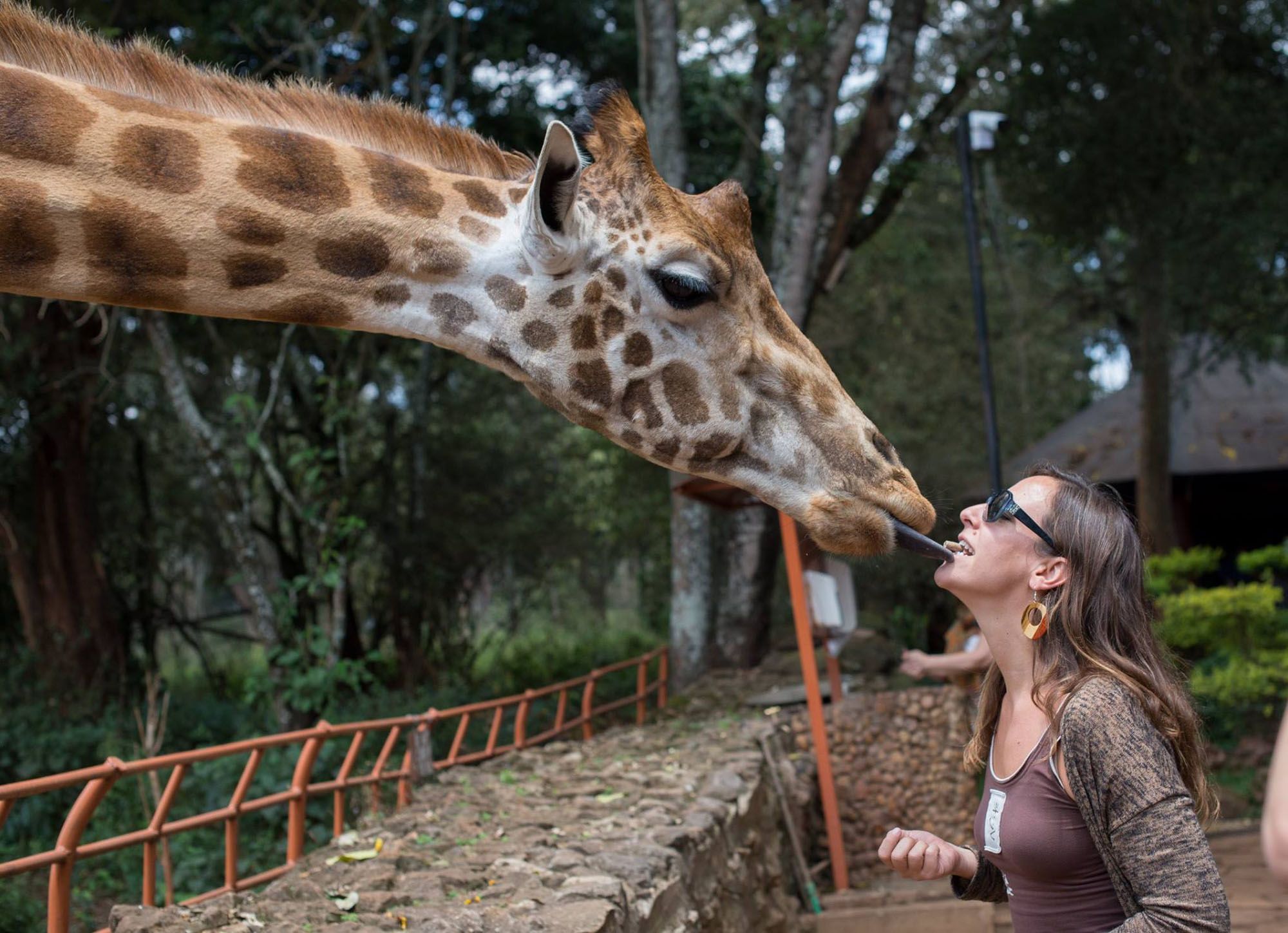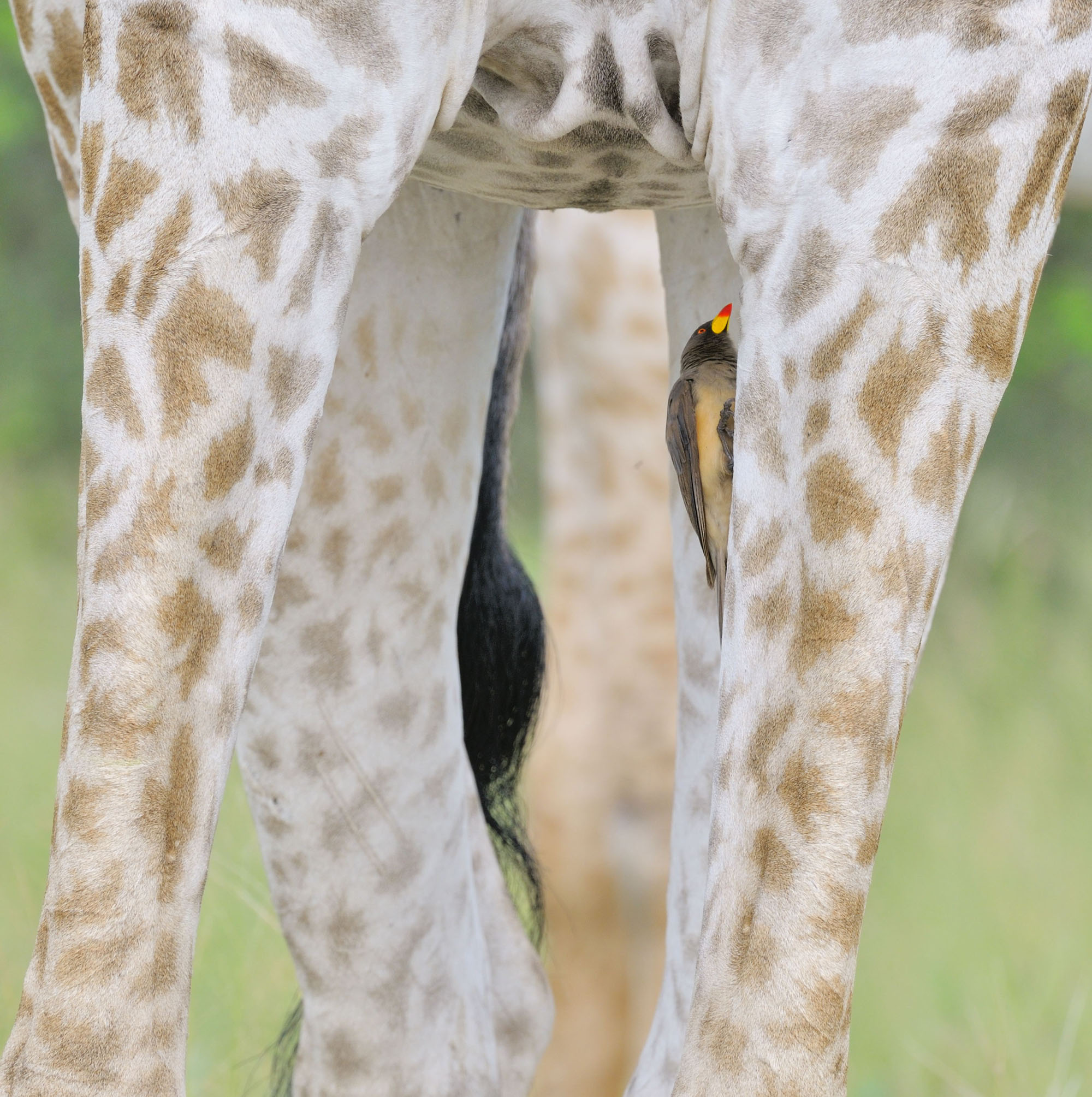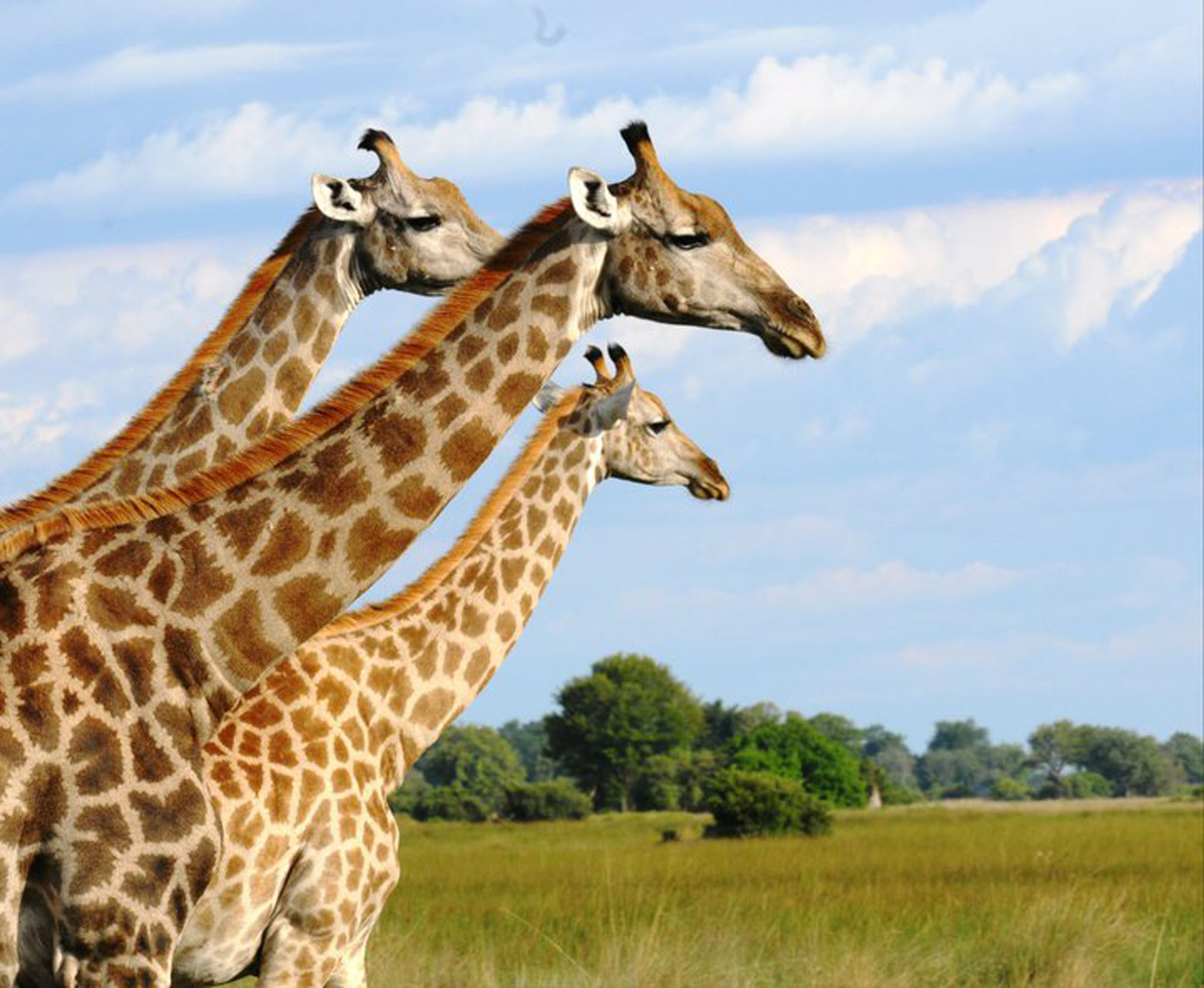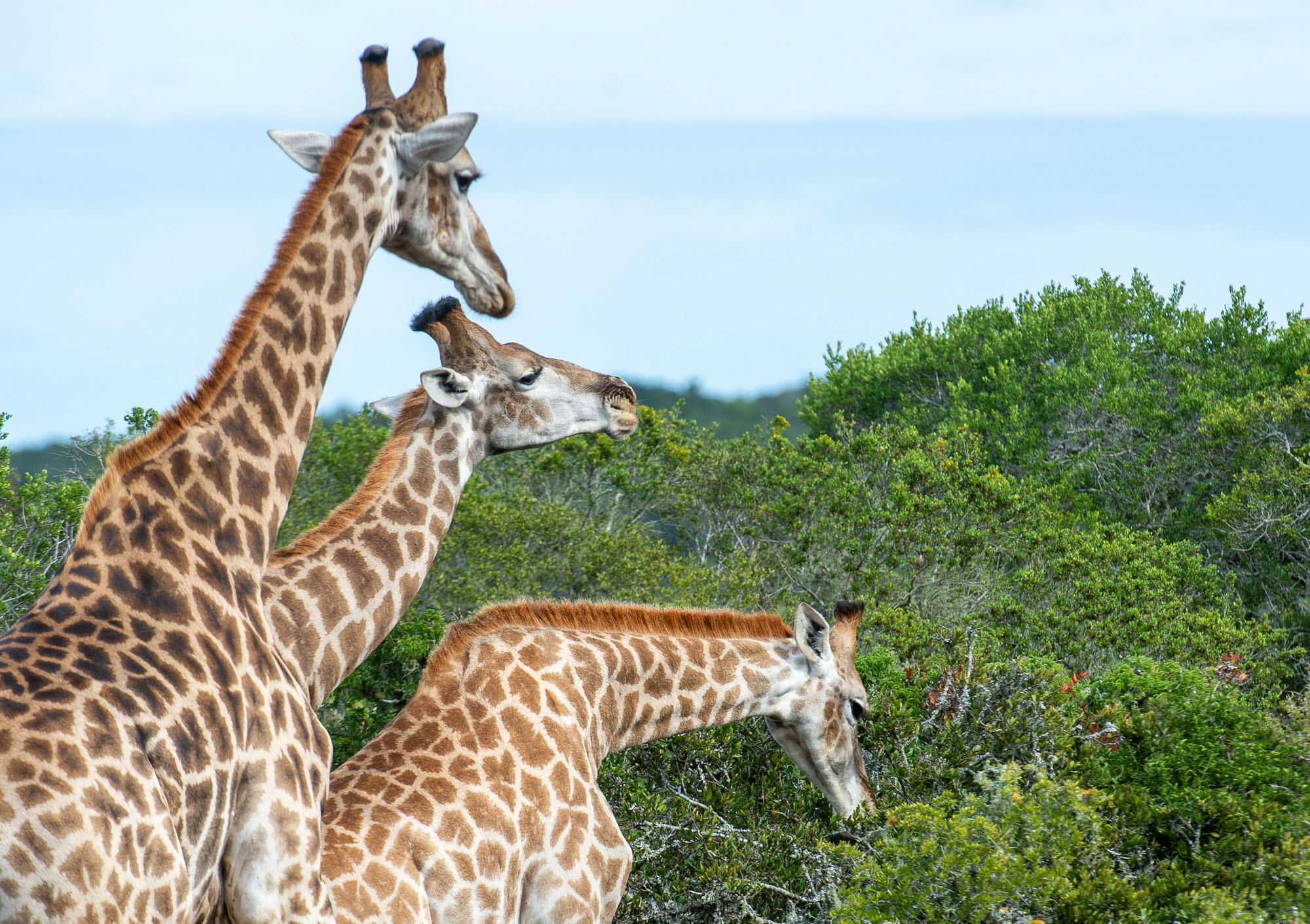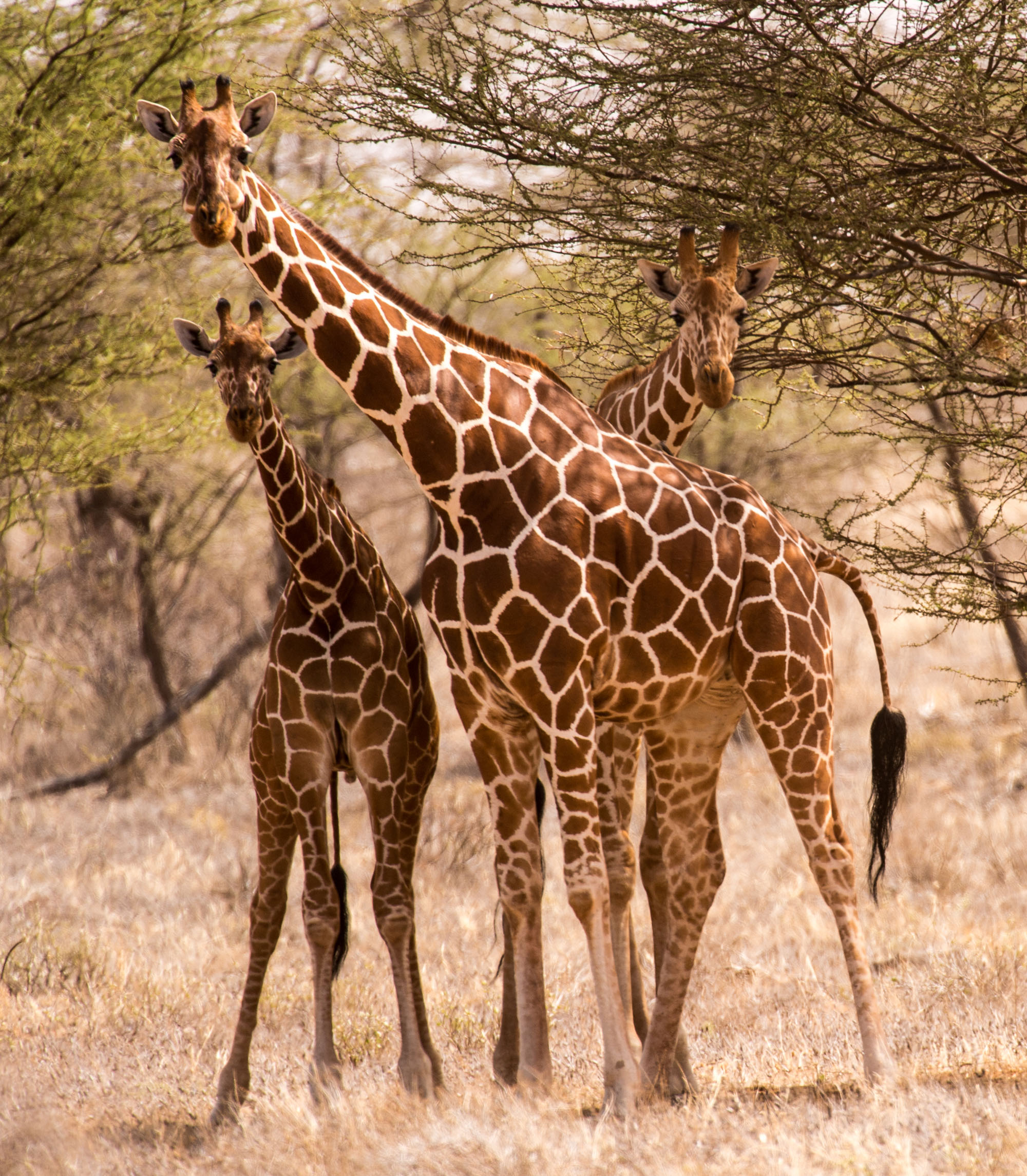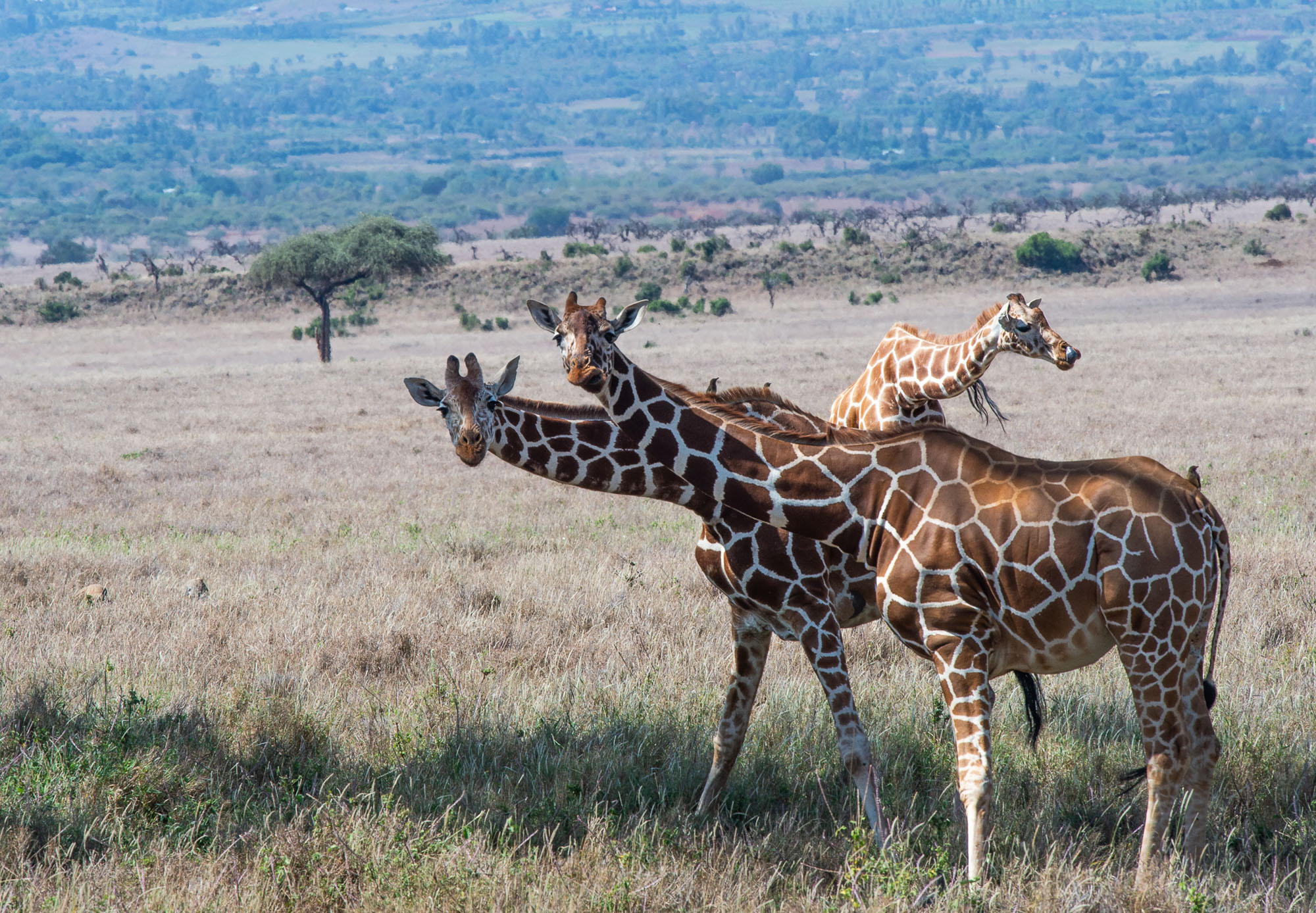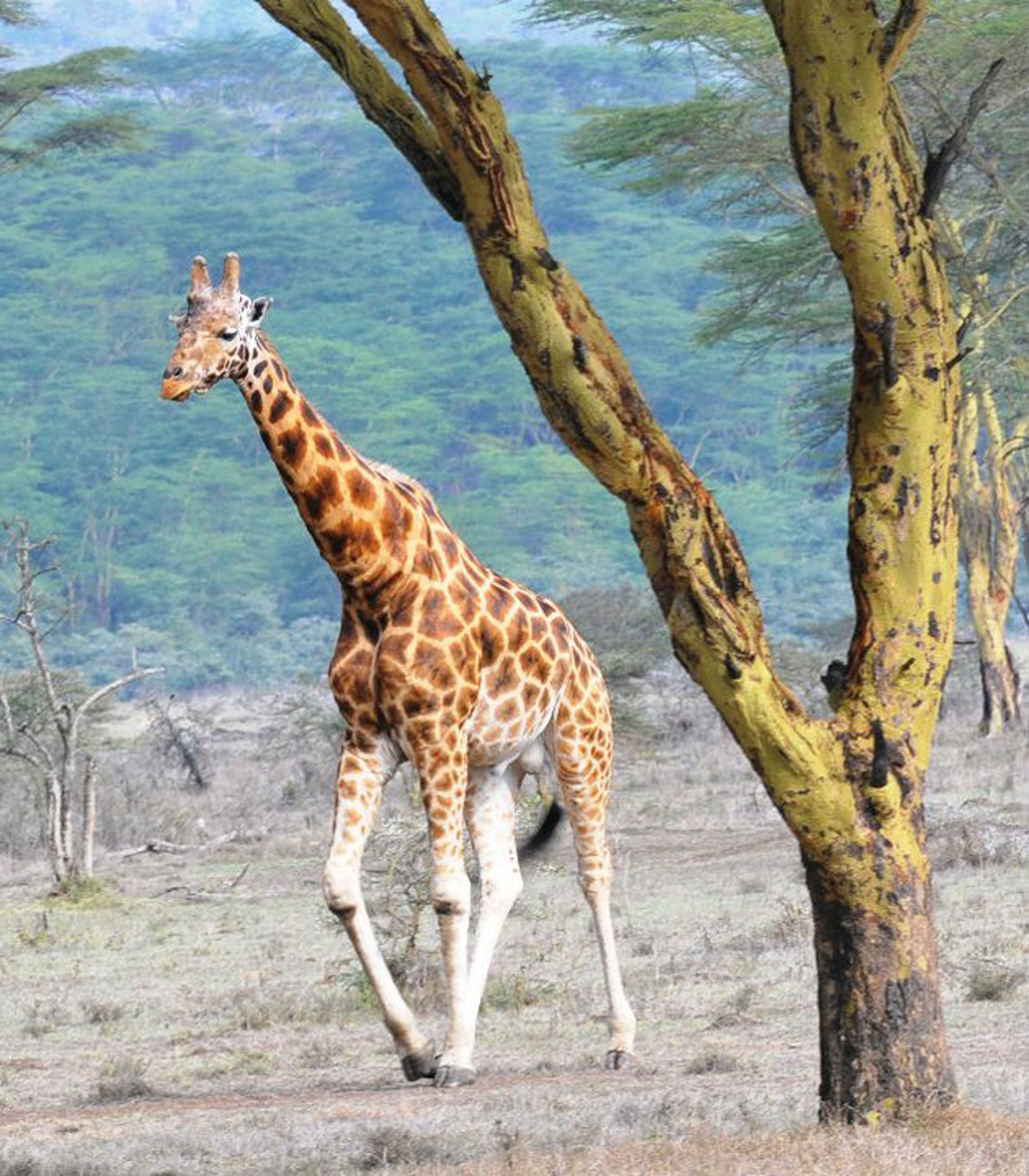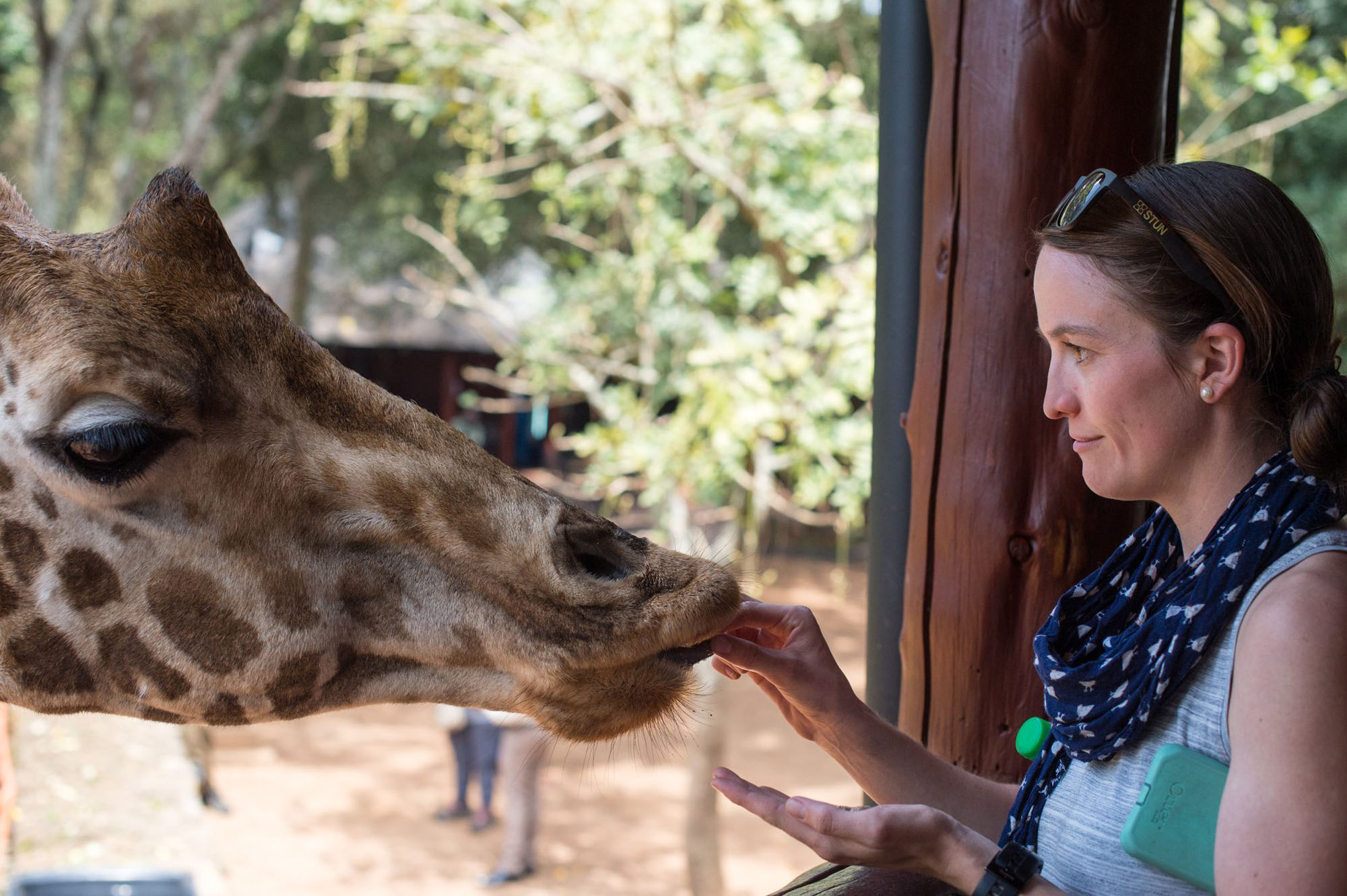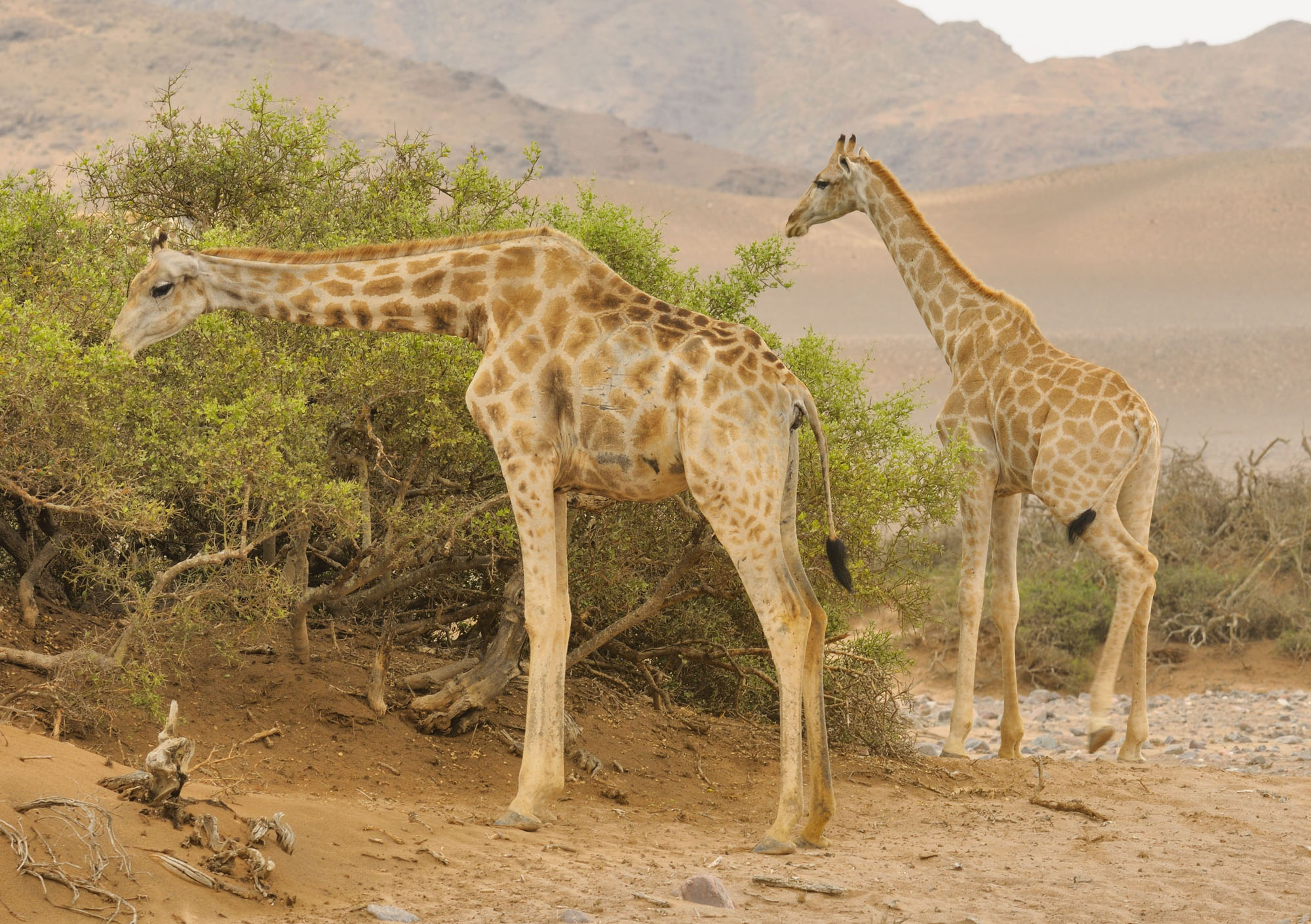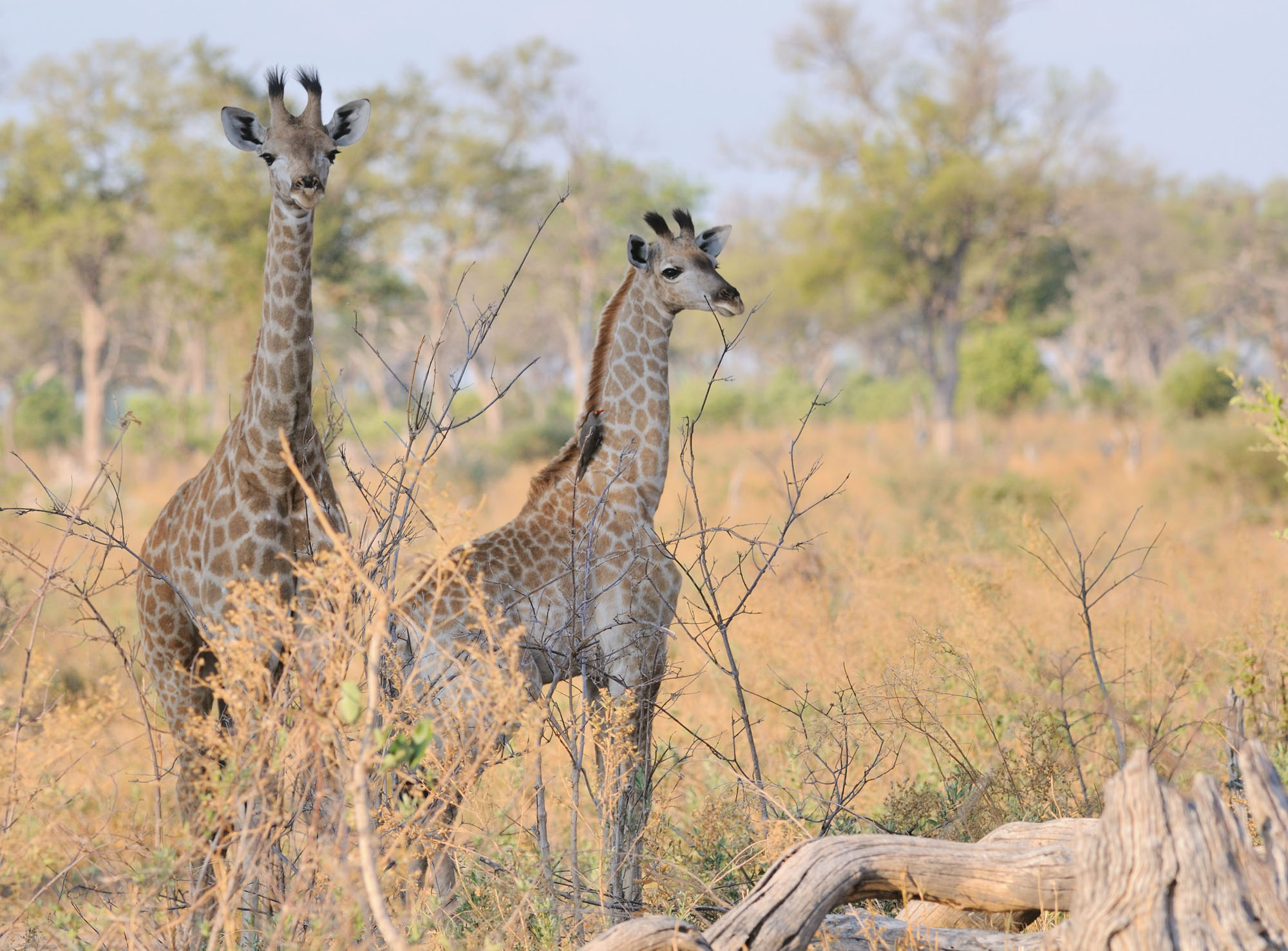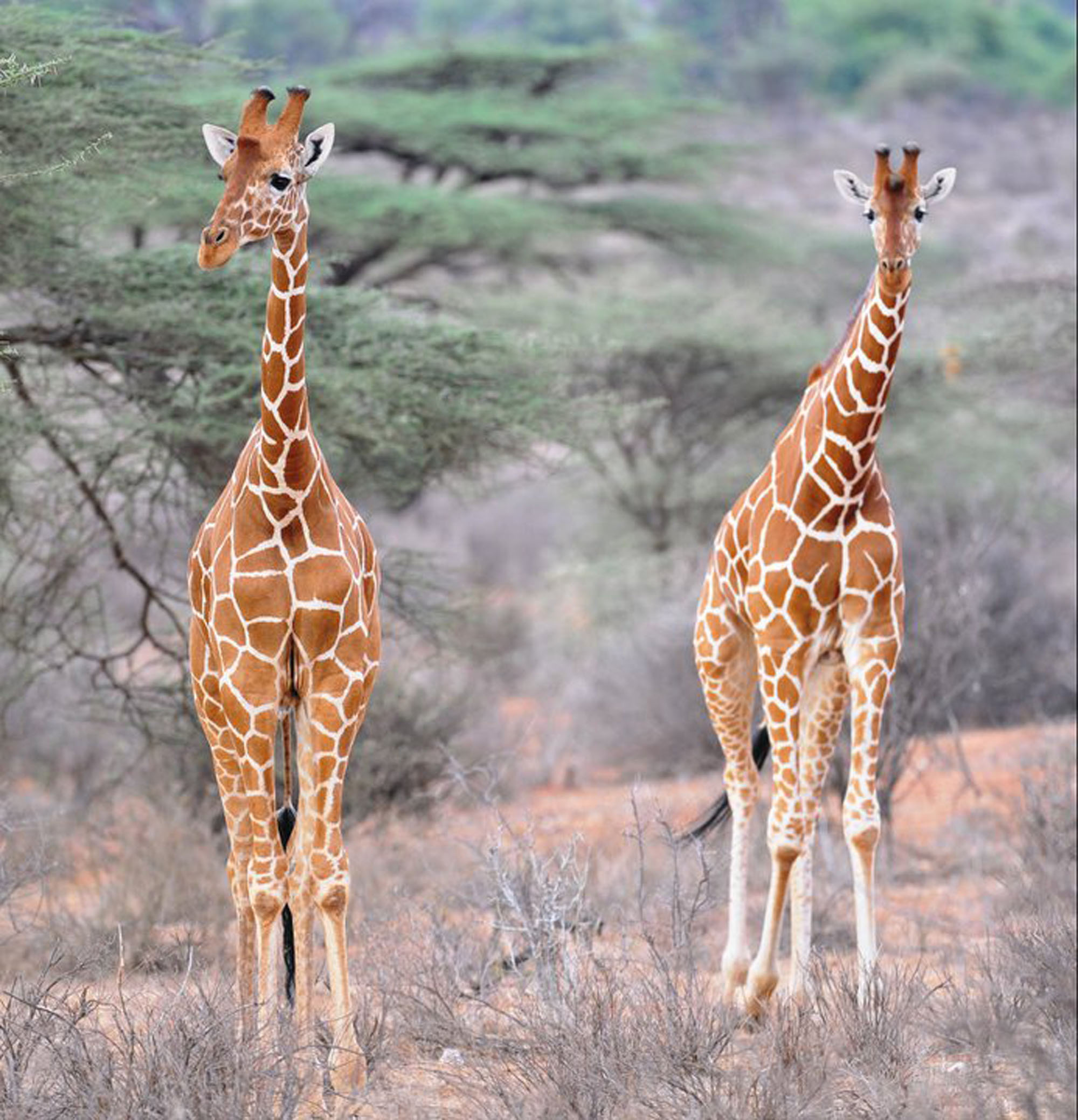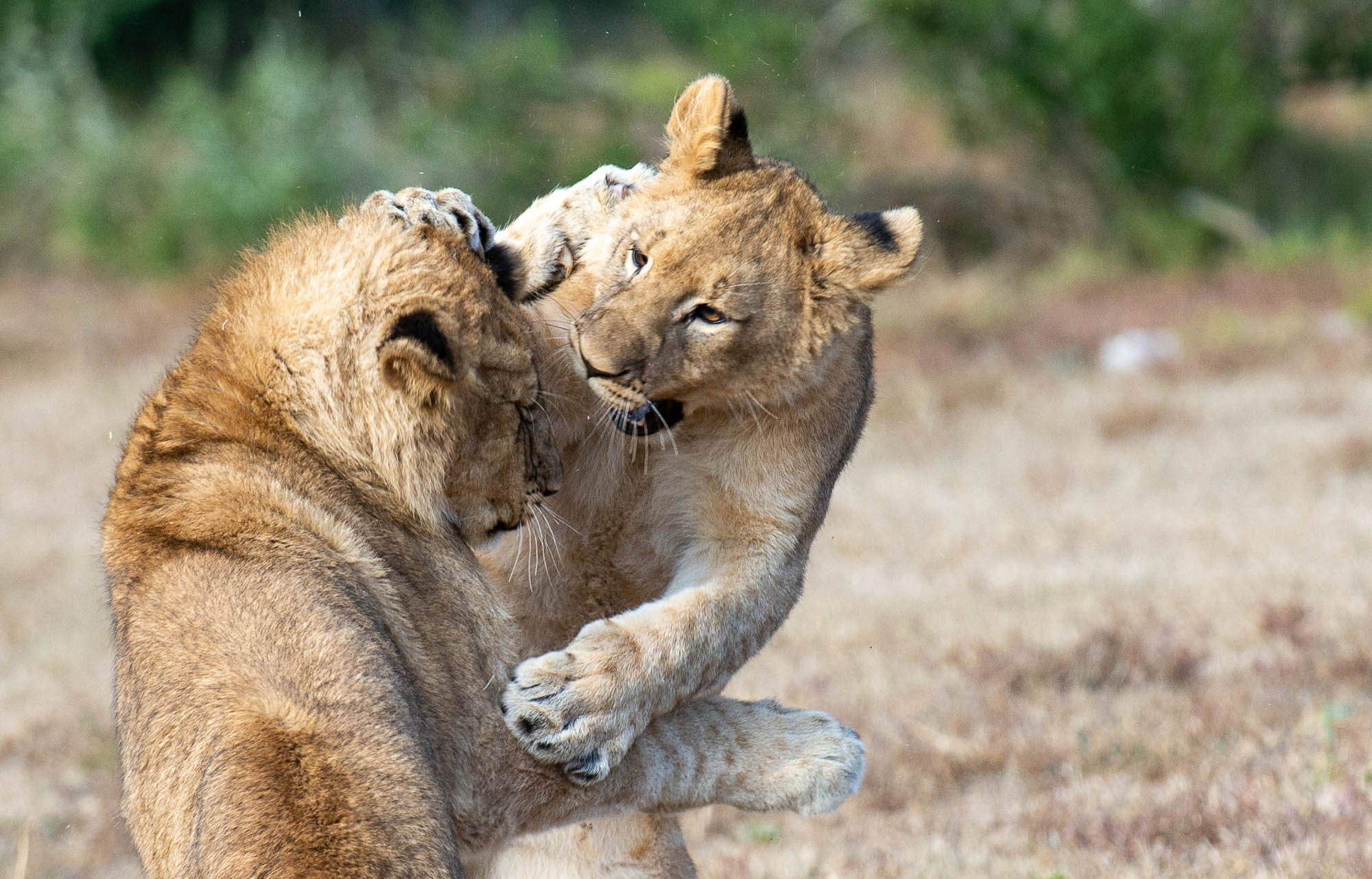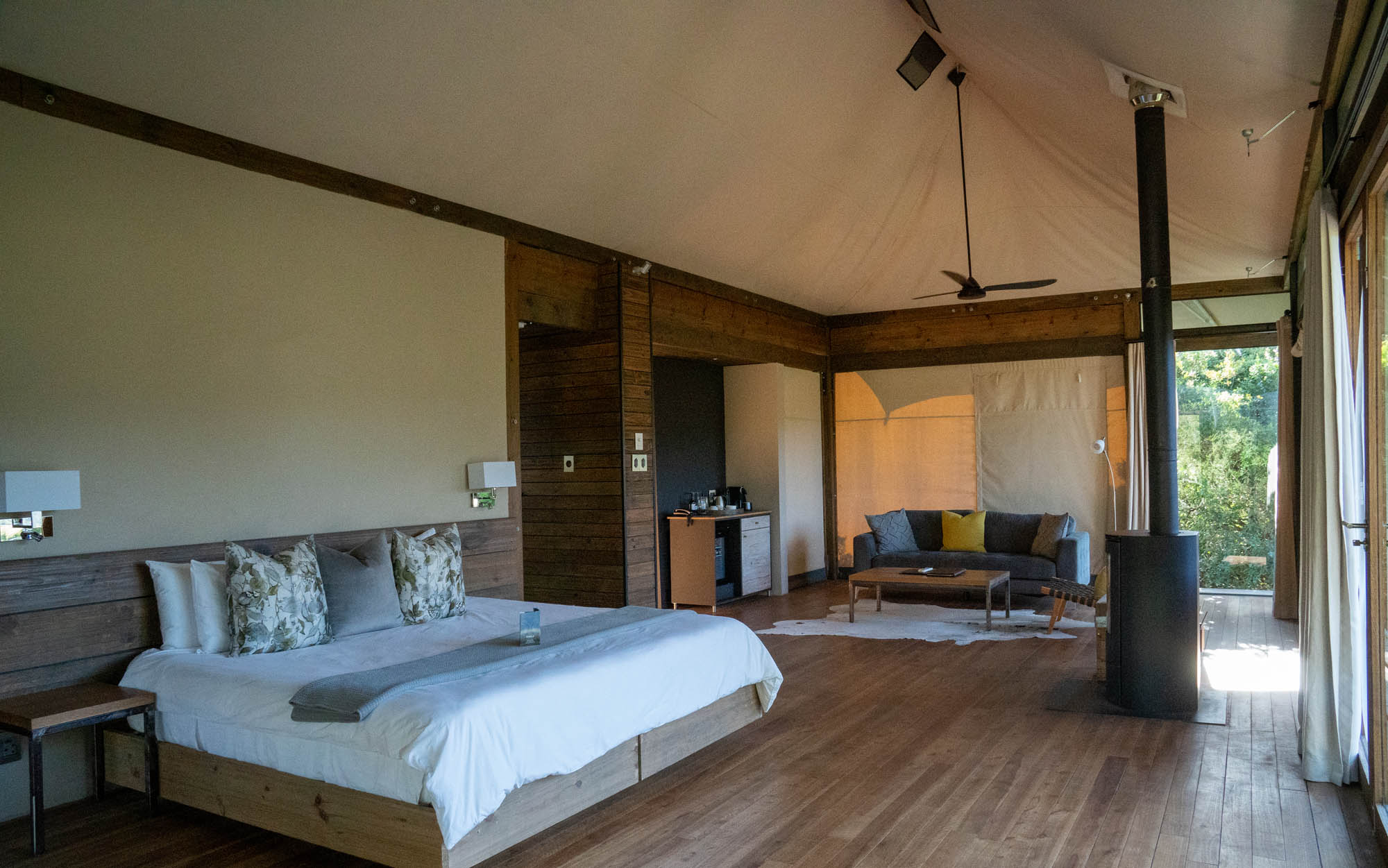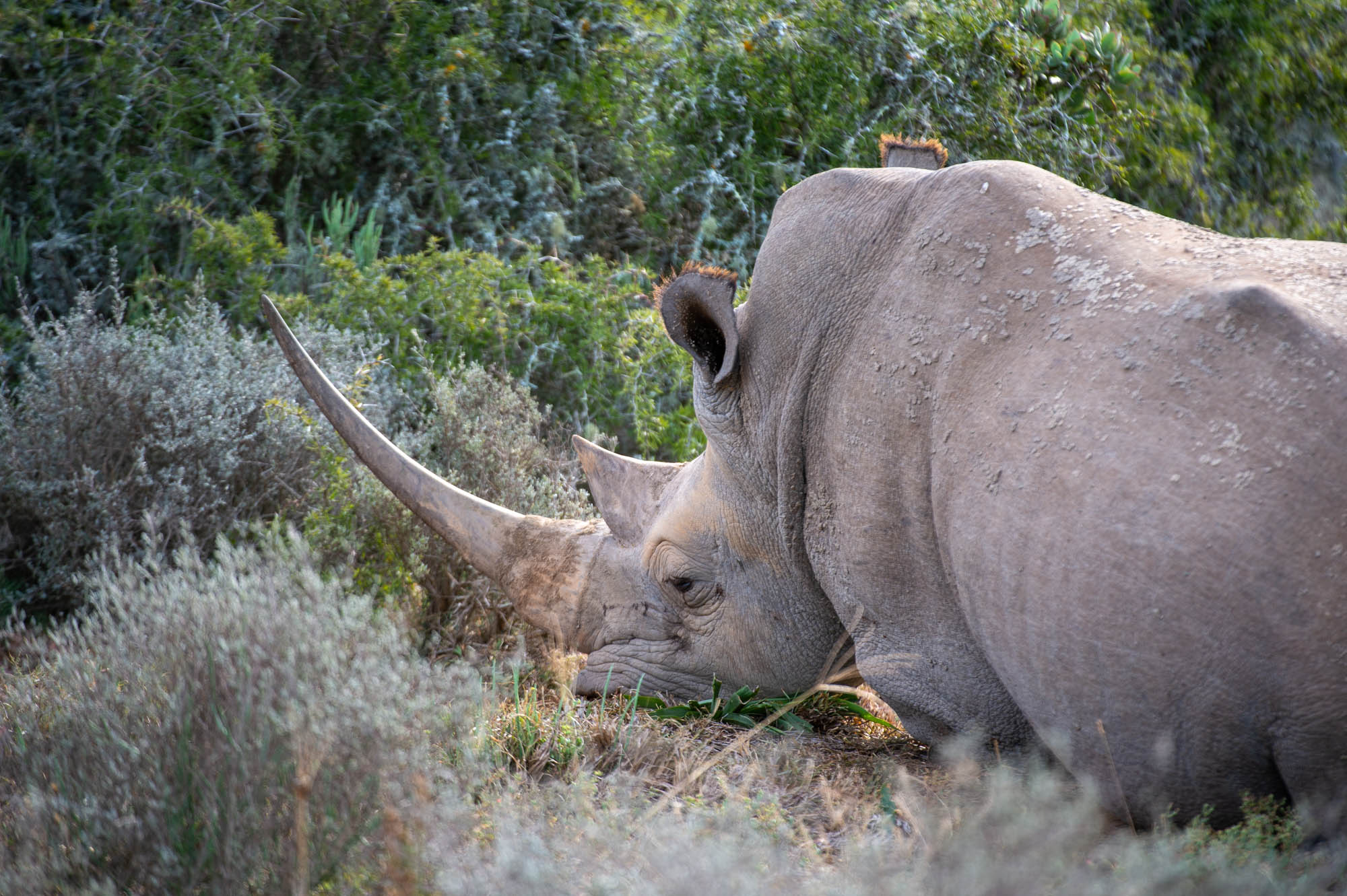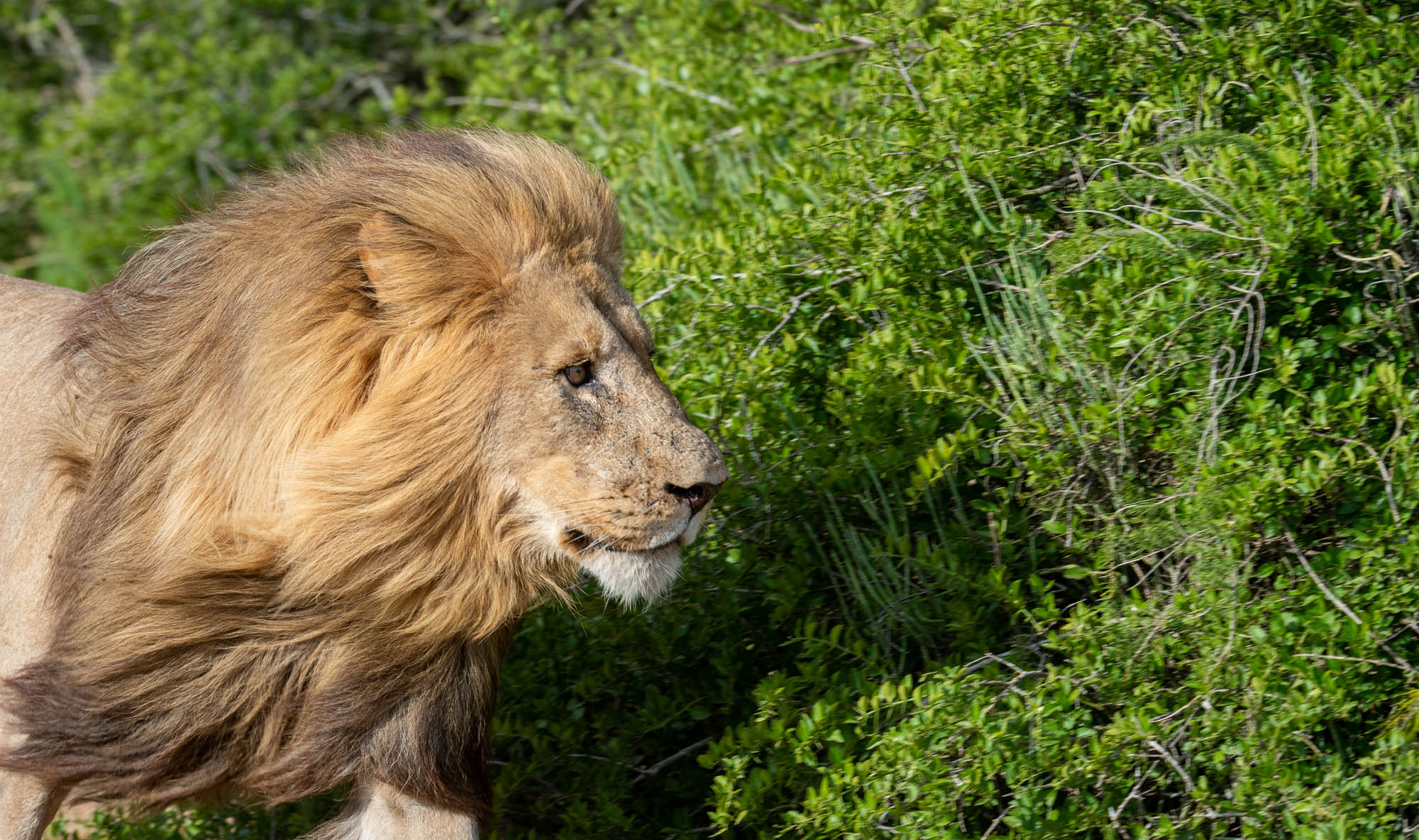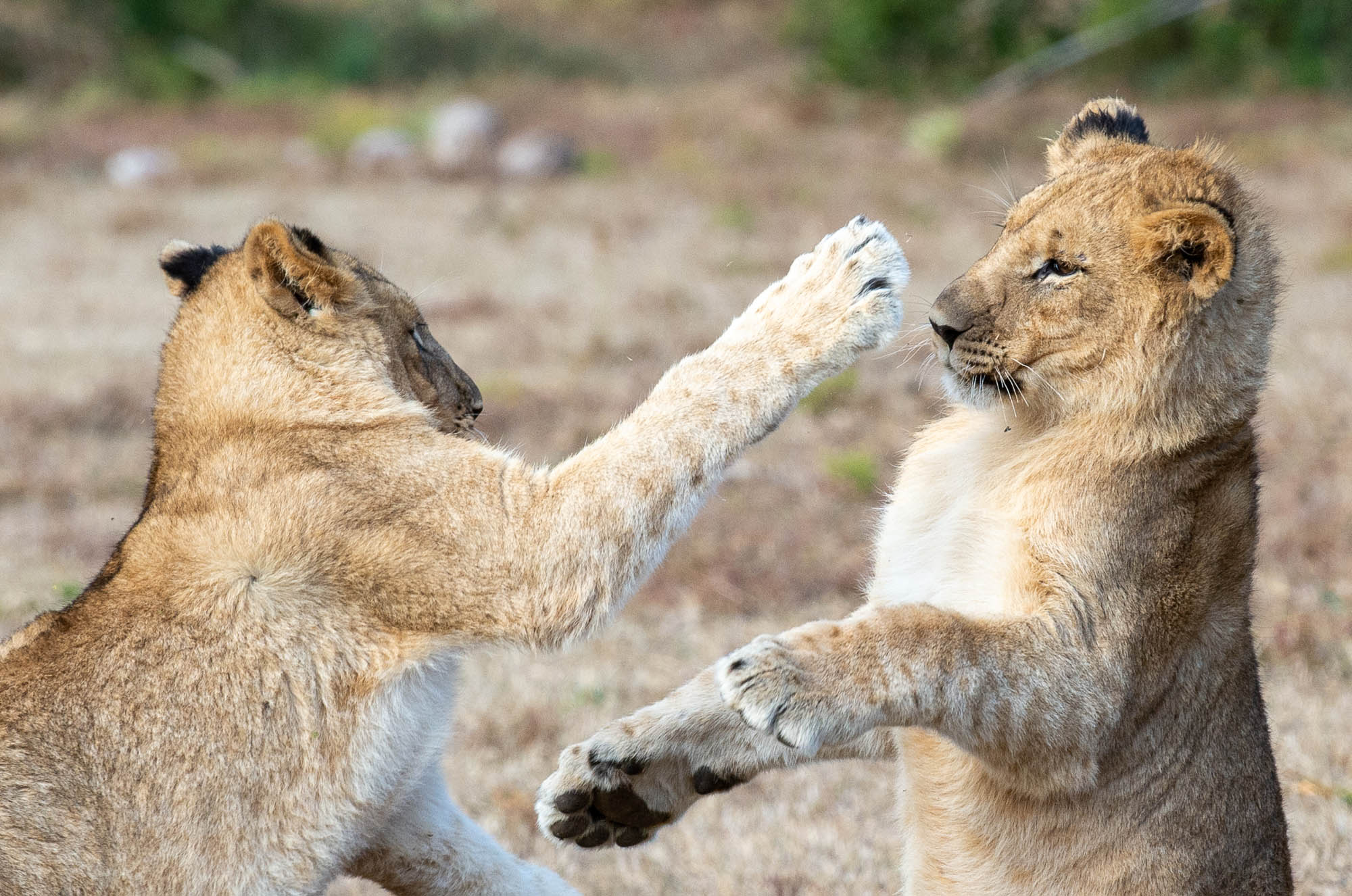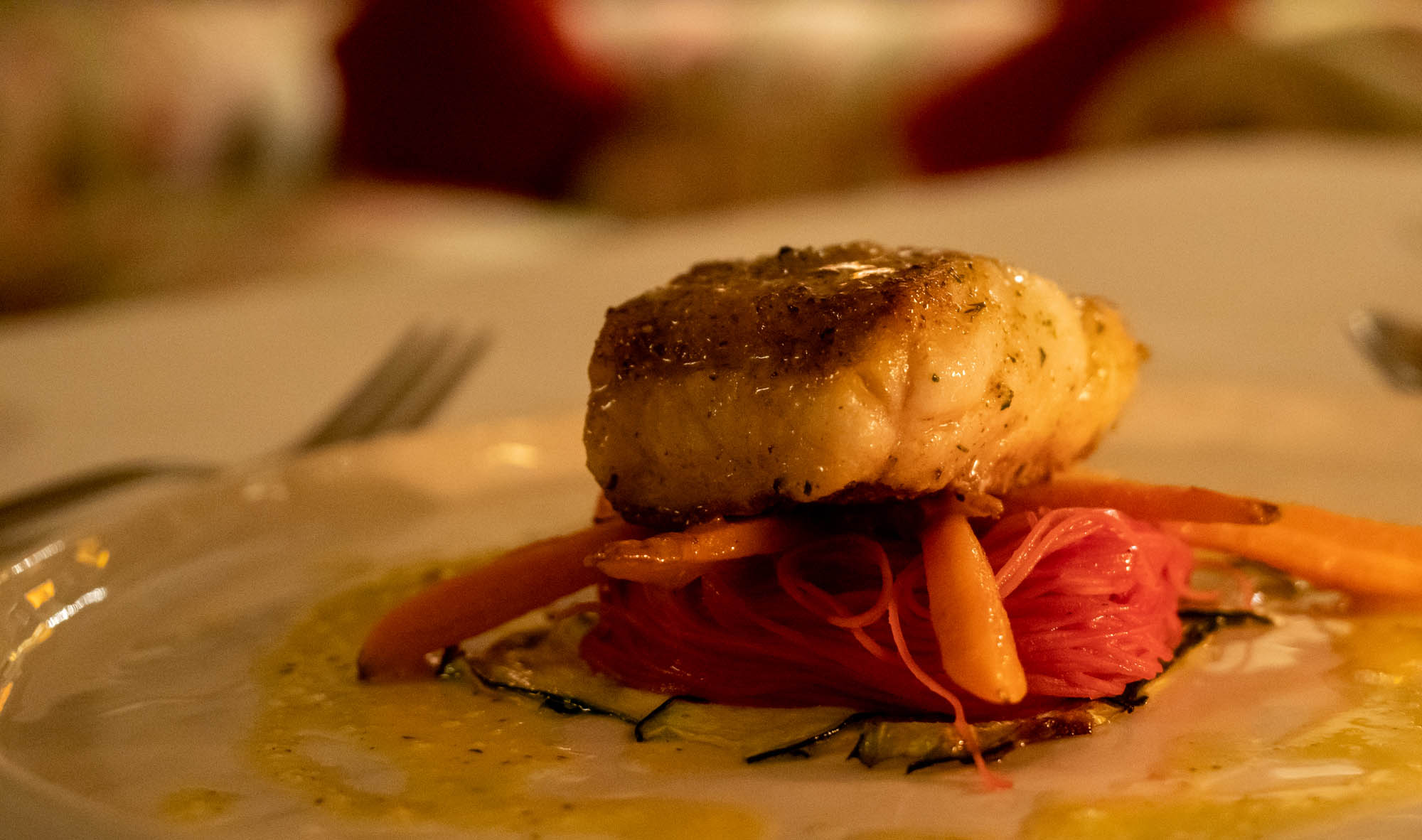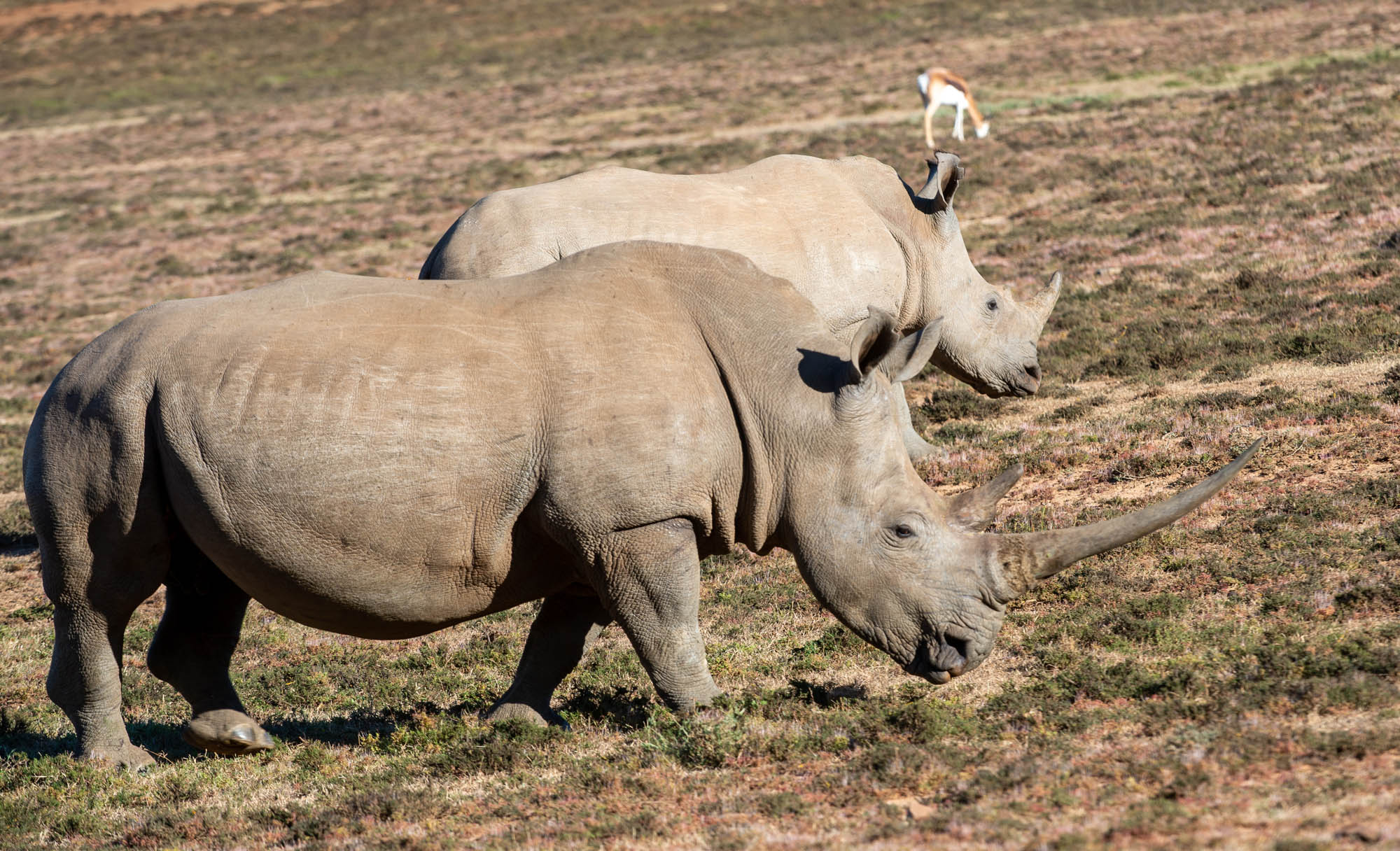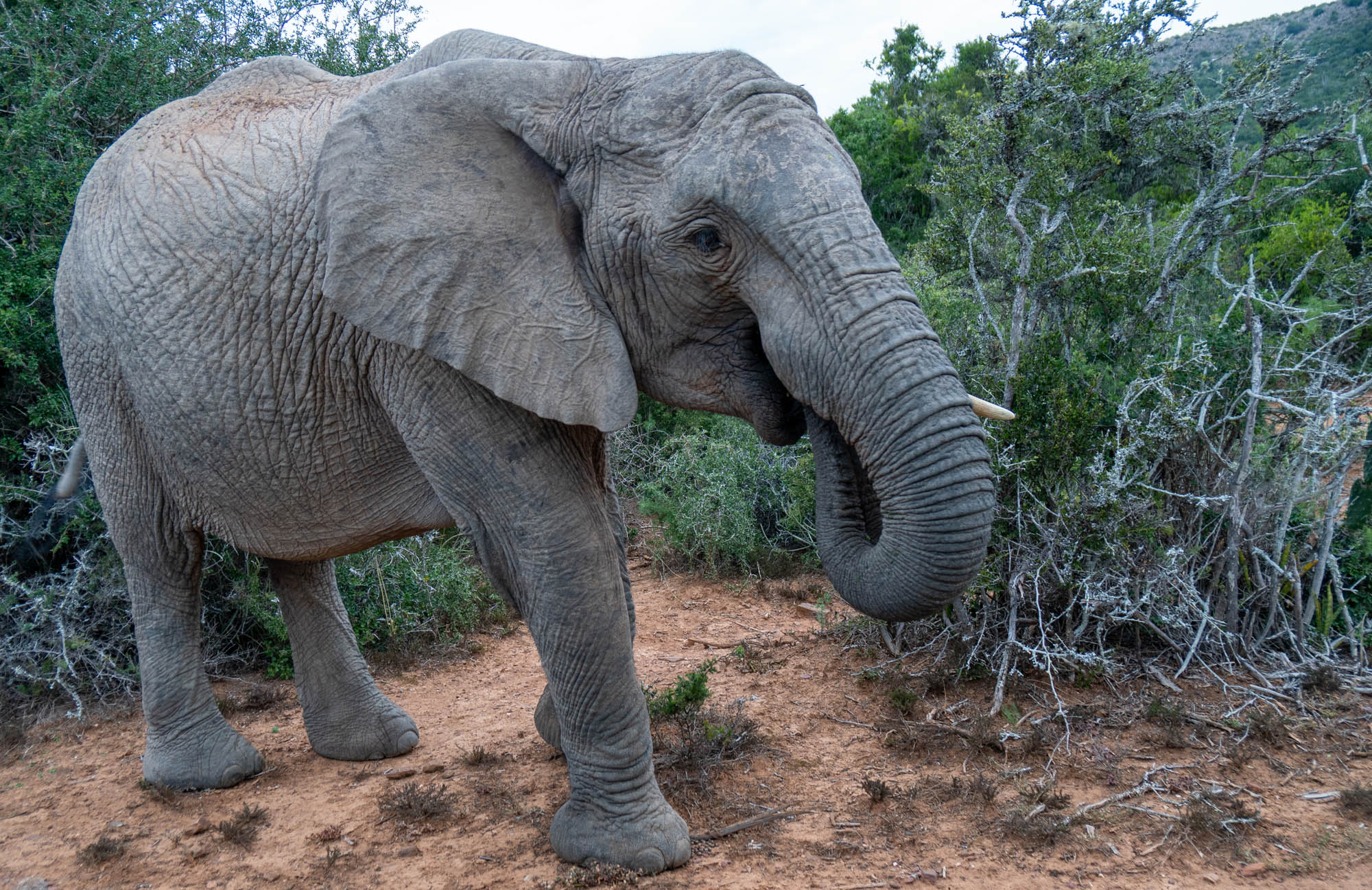South Africa’s Eastern Cape game reserves are located in a spectacularly beautiful, malaria-free area just off the Indian Ocean coast, about 500 miles due east of Cape Town. The area is easily accessible by air from Johannesburg (1 hr 45 minutes) and Cape Town (1 hr 15 minutes). Its beautiful green rolling hills, temperate weather and abundance of wildlife with all of the ‘Big Five’ mammals being present (lions, leopards, buffalo, elephant and rhino) make it an attractive destination for visitors wanting to add a safari to a Cape Town stay. It is also a great option for families who don’t want to take their children into a malaria area, or who may simply want to explore a different safari area, having previously visited the Sabi Sands or Timbavati or another area in South Africa.
Jason and Bert have visited the Eastern Cape reserves a total of four times between them; Lyndon recently made it there for the first time; here is his personal account:
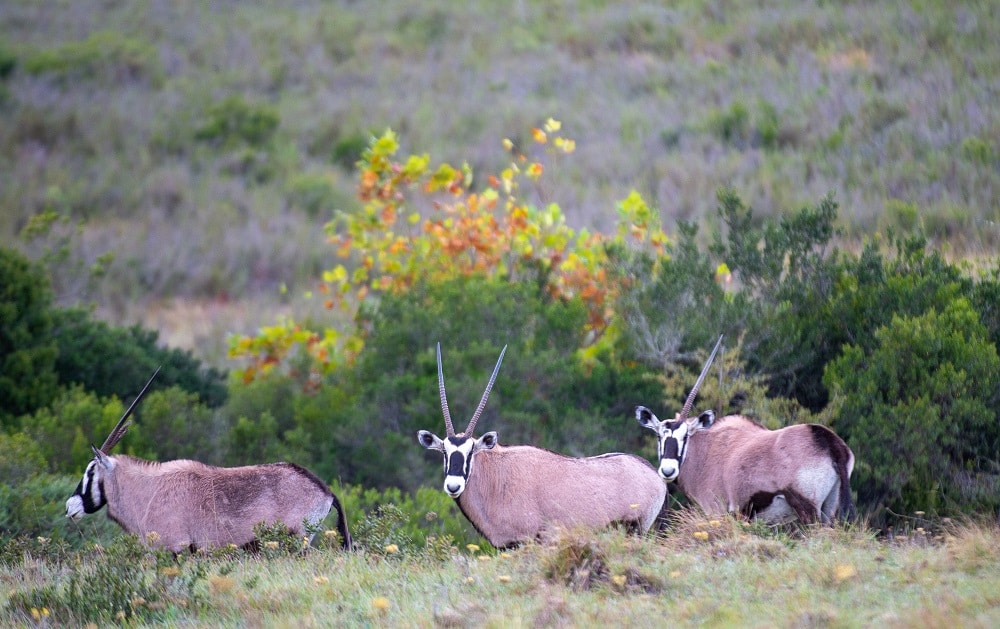
“I spent four nights in two different camps in South Africa’s Eastern Cape in the middle of March with my family. It was my first time in the area and I must say I really enjoyed it. The first stop was Lalibela Treetops. We flew in the morning from Johannesburg to Port Elizabeth (now Gqeberha) and had a road transfer of about an hour to the camp.
What were some of the highlights? I can start with the staff led by the manager Wynton Fortune – they were fantastic. Likewise our guide Desigan Naidoo – he goes by Des – was very engaging and skilled. The camp itself felt intimate and the rooms were canvas with a thatch roof. Plenty of room with all the necessities. Meals here are communal which is always fun.
The area where you do your game drives is very interesting. The Eastern Cape is a Big Five destination but there’s no malaria which is great for families with kids, or just anybody who’s not keen on taking the malaria pills. The landscape is filled with rolling green hills with ample bushes and trees as well as open savannah. It very much reminded me of parts of Kenya, such as Lewa and the Masai Mara. Lalibela has abundant plains game including blesbok, impala, zebra, wildebeest, nyala, amongst others. Also plenty of giraffes, good numbers of rhino and lion. We saw a herd of about 300 buffalo and on our last day we got a bit lucky and spent some time viewing a cheetah. There are probably about 50 elephants on the property as well.
Lalibela is very interesting because it is essentially a conservation program being run as a safari destination. Their mission is to expand their acreage, rehabilitate the land, and then let the animals do their thing. It can be strange to be watching a pond full of hippos and then hearing a truck speed by on a nearby public road. I gave this some thought and although some people might find it distracting, I think it is commendable. Just as in Kenya where you’re likely to see the Maasai with their cattle grazing inside a conservancy or alongside a national park. Civilization is not something that can be easily contained but at the same time these wildlife sanctuaries can expand and thrive alongside human populated areas, creating more room for animals to inhabit. With the wildlife essentially repopulating the areas where they naturally occurred before humans displaced them.
From Lalibela, we transferred by road to our next game reserve – Kariega Ukhozi – and there were some distinct differences. Where Lalibela had rolling hills, Kariega had steep and mountainous ones. The relatively sparse bush and forest was replaced with dense, impassable sections. The open plains remained and just like at Lalibela, the wildlife were abundant. We had a great time with our guide Megan who really knew the area and the animals in it. On our first day we were able to see a mother rhino and her baby. The mother, Thandi, had survived a horrible poaching attempt some years ago. She still bore the scars of the incident but it hadn’t stopped her from giving birth to at least 6 (or maybe 7) calves. Some of whom have gone on to birth or father their own calves. That is the type of impact a place like Kariega can have.
Just like Lalibela, Kariega was formerly farmland, devoid of many of the large mammals which have been thriving here for several decades now. At one point we were able to easily see at least eight different large mammal species from our game drive vehicle which is always a good sign. We saw plenty of kudu, nyala, blesbok, wildebeest, zebra, rhino, and probably more giraffes than I have seen anywhere else ever. We got to see lions a few times and the area, tucked between the Kariega and Bushman’s rivers, is possibly even more striking than Lalibela.
Your guide joins you for breakfast and every third night they do a traditional meal in the boma where your guide joins you again. The food was excellent and our rooms were very spacious and included a plunge pool amongst other niceties. Overall both camps and areas impressed me.”
Lyndon and Jason can both assist with more information and trip ideas for Southern Africa, incorporating a few days in the delightful Eastern Cape reserves. Email lyndon@fisheaglesafaris.com or jason@fisheaglesafaris.com or leave a message at 1-800-513-5222 and one of us will be sure to call you back.


